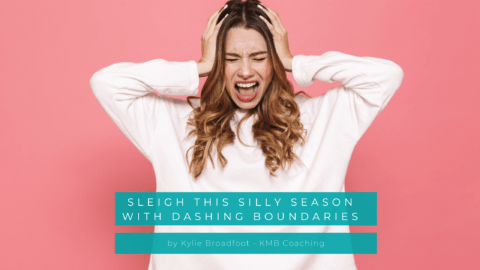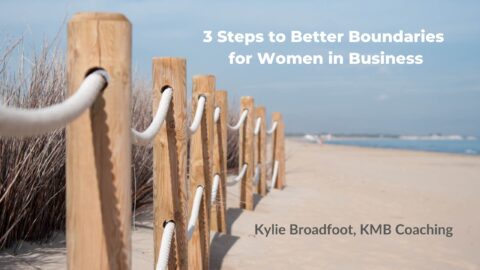One of the tools that I use frequently in my work, but weirdly don’t mention much, is meditation. If you haven’t been told (or researched) the myriad of benefits of meditation, the Mayo Clinic lists these benefits:
When you meditate, you may clear away the information overload that builds up every day and contributes to your stress.
The emotional and physical benefits of meditation can include:
- Gaining a new perspective on stressful situations
- Building skills to manage your stress
- Increasing self-awareness
- Focusing on the present
- Reducing negative emotions
- Increasing imagination and creativity
- Increasing patience and tolerance
- Lowering resting heart rate
- Lowering resting blood pressure
- Improving sleep quality
I first learnt about meditation and visualisation back in my undergraduate years of my Occupational Therapy degree. It was a subject called Experiential Studies.
This included memorable experiences like roaming the grounds of the former Abbotsford Convent to do all sorts of activities (most of which I can’t remember now seeing they were a l o n g time ago! But I do think there was a brief foray with basket weaving, much to my dismay!)
I do recall having to walk around the room as a cat in one class (I think we had to act like we had a tail. It seems bizarre now – and more so back then! And completely in contrast to subjects like Anatomy, where we had to show up for 8am lectures and stay awake enough to try to learn about muscle origins, insertions and nerve supply!)
Experiential Studies, on the other hand, was a wonderful departure from the rest of the quite dry 16 subjects we had to get through in first year. This enabled us to be immersed within the gorgeous grounds of the Convent and have fun with our peers / friends while embracing learning through experiences.
One of the classes taught us meditation. We could lie on the floor and listen to all different types of meditations as the sun streamed in through the windows (I’m clearly remembering it in spring / summer!) This gave us not only insight into different techniques but enabled us to experience them for ourselves.
This was a triumph because when it came time for us to be trotted out on placement, we had some tools in our (quite sparse) toolkit to use for group programs and relaxation groups that we might run.
Let’s skip ahead a few years (like about 20) to when we learnt about meditation in my coaching studies. I learnt how to amplify my meditation skills in ways that I’d never learned about back at Uni, thanks to NLP (neurolinguistic programming).
It enabled me to add in all the senses (modalities) and enable the client to experience powerful transformations.
Now, it’s a core component of my work. It’s the backbone of my Create Your Vision workshops; a beautiful feature of my retreats and a regular part of the coaching work I do with private clients.
I love using a ‘future pace’ to finish off a coaching session using meditation. It takes you into a time in your mind in the future where you can experience what you desire as already having taken place.
It enables you to ‘try on’ the experience of being the person who has already accomplished this. And it’s a beautiful and very powerful way to anchor the session and shift those neural pathways that you may have heard about. (This is part of what makes coaching so transformational and helps people to achieve such rapid results).
Over the years, I’ve meandered through ‘seasons’ (of my life – a term I heard Jenna Kutcher use and loved it) of using meditation for myself. And times when my meditation has involved walks or gym workouts or gardening.
In my opinion, many things can evoke a kind of meditative state. So if you’re not into meditation per se right now, that’s ok! Maybe you’re in a season of life where you will get joy and satisfaction from activities that tick off these things (Tony Robbins’ 6 Core Needs):
1. Certainty (in yourself; backing yourself; predictability of knowing which days you work out. Or what what time you do your morning walk or doing a weekly meal plan etc)
2. Variety or adventure (too much certainty will lead to boredom. Variety/adventure keep the spice of life alive and mix things up a little). Mixing up your workout; taking a different walking route; growing a range of different fruits, veggies or plants; travelling; cooking.
3. Significance – feeling important and valued. Because your garden is so impressive or you can now do certain things in your gym workout. You get praise for your cooking or people tell you how well you look.
4. Connection – to yourself, nature and / or others
5. Growth – personal development; improvement in a range of ways (physical, emotional, spiritual – whatever that means for you)
6. Contribution – it’s good for the greater good, not just yourself. Getting fitter to reduce the impact on our health and medical system or positively influence your children.
What To Remember About Meditation:
There is no predisposition to being ‘good at meditating’. Only whether you try it and persevere, or not. There is no such thing as ‘I’m no good at meditating’ or ‘I can’t do it’.
The only way those things could be true is if you never try; or you hold an expectation of how it should be. Anyone who meditates will tell you that sometimes their mind isn’t still; sometimes their shopping list pops up in their head; sometimes they feel like they’ve got ants in their pants and can’t sit still. ALL of these are ok. Actually, I’d go so far as to say they’re to be expected. Just keep going.
Meditation is like golf – (I’m no golfer but it seems like an apt analogy) how well you play on any given day has nothing to do with perfection or a linear pathway of improvement. It fluctuates. You have a good day and a bad day. But you’re still overall far better for having got out on the golf course and played a round chatting with your friends, and breathing fresh air out as you stroll along the fairway, than if you’d stayed home and done bugger all. There will be ups and downs. That’s life.
Start small (you quite possibly have heard me say this a lot!) Aim for 10 mins (15 max.) And set a timer if you like so you’re not worried about losing track of time. Sit somewhere comfortable (there is no need to be crossed legged embracing your inner yogi unless you want to!) Throw a blanket over yourself if you’re chilly and just give yourself those 10 previous minutes.
Release all expectations about how it will be and work with what is present right in the moment. A lot of people find it helpful to focus on their breath and gradually allowing the breath to travel further into the belly as you relax more. But if find this stressful, just allow your mind to wander. There is no such thing as ‘getting it wrong’ so know that any time you spend meditating is a deposit towards your wellbeing. Yay for that.
Whether you decide to add meditation into this season of your life – or not – give yourself grace. How will you feel if you do it? How will you feel if you don’t? And let that guide you. Remember, you’re always allowed to change your mind. I’m not a fan of black and white thinking, so shades of grey is perfectly fine too.
Enjoy! Kylie x
Feel free to find out more about how we can work together














